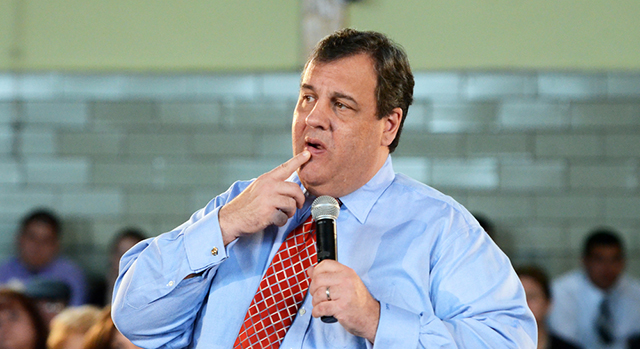
When we wrote in April about New Jersey Gov. Chris Christie’s budget “sins,” one of the biggest was the money shuffle he engineered after his 2010 decision to kill an $8.7 billion commuter rail tunnel from New Jersey to New York City.
That decision, which boosted him to national prominence, was a major bragging point for years. But now he’s playing tunnel defense rather than his customary offense amid a torrent of terrible tunnel news: lengthy delays in the century-old rail tunnel commuters are stuck with now; jockeying among New Jersey, New York and Amtrak over how to pay for a new $14 billion tunnel; and warnings of chronic failures and shutdowns if something isn’t done soon to add rail capacity.
Had Christie not spiked the so-called ARC tunnel, it would be coming online in about three years. But now, as Christie runs for president on his claim of having been a prudent and competent guardian of New Jersey’s finances, the tunnel problems have inspired a spate of news reports, including one by The Record newspaper in New Jersey’s Bergen County saying the cancellation wasted $1.2 billion that had been spent on engineering.
Why did Christie kill the tunnel, and what did he do with the money afterward? As we reported back in April, Christie diverted a total of $3 billion of highway toll increases and Port Authority of New York and New Jersey money originally earmarked for the tunnel to bail out Jersey’s finances – the biggest one-time budget fix of his administration.
The upside: Christie was able to keep a campaign pledge and avoid raising taxes, including New Jersey’s gas tax, which at 14.5 cents a gallon is lower than any state but Alaska.
The downside: No salvation in sight for the estimated 87,000 New Jersey Transit rail commuters who cross the Hudson River to Manhattan each weekday in tubes dug when Theodore Roosevelt was president.
Since Superstorm Sandy flooded the tunnel with saltwater and caused extensive damage, the need for additional rail capacity has only become more acute. Time is running out before one of the two rail tubes within the tunnel has to be shut down for repairs, Amtrak executive Stephen Gardner warned at a hearing on Monday.
That would bring the daily commute to a crawl. “We would be left with having to handle 24 trains’ worth of demand across six slots spread between Amtrak and New Jersey Transit,” Gardner said, noting that Amtrak needs four of the slots, leaving just two for commuter trains.
Christie has defended his decision to kill the ARC tunnel, saying New Jersey would have been stuck paying for billions in potential cost overruns. A spokeswoman added that “the completion of ARC would have done nothing to resolve the issues we’re still facing with Amtrak’s tunnels today.”
Gardner said at the hearing that Amtrak’s tunnel problems would exist even if the ARC were on schedule, but he also answered yes when asked if the tunnel would have provided a “safe haven” to New Jersey commuters by giving them a backup.
There is no consensus about how to pay for Amtrak’s proposed new tunnel project, known as the Gateway Program. Sen. Chuck Schumer, D-NY, this week proposed creating a new nonprofit agency to raise money for the effort.
Amtrak supports an 80 percent federal, 20 percent local funding split, but its influence in Washington is extremely limited. It’s not clear when, if ever, the Gateway Program, which would cost billions more than the canceled ARC tunnel, will get under way.
Christie recently said New York should shoulder a portion of the cost. “The reason I killed the ARC tunnel was the federal government was contributing to it, the state of New Jersey was contributing to it and the state or city of New York was contributing nothing,” he told WABC.
Earlier this week, New York Gov. Andrew Cuomo said money should come from anywhere but his state. “It’s not my tunnel,” Cuomo told reporters. “It is an Amtrak tunnel that is used by Amtrak and by New Jersey Transit.” However, if the federal government steps in to pay for the project, Cuomo suggested he may chip in: “If they’re serious, I’ll come to the table,” he told The New York Times.
The ARC tunnel was expected to be completed in 2018. The earliest a Gateway tunnel could open is 2025, Gardner said at the hearing. “Every day that we defer is a day of extending, frankly, our risk,” he said.
Allan Sloan contributed to this story.
Our most important fundraising appeal of the year
December is the most critical time of year for Truthout, because our nonprofit news is funded almost entirely by individual donations from readers like you. So before you navigate away, we ask that you take just a second to support Truthout with a tax-deductible donation.
This year is a little different. We are up against a far-reaching, wide-scale attack on press freedom coming from the Trump administration. 2025 was a year of frightening censorship, news industry corporate consolidation, and worsening financial conditions for progressive nonprofits across the board.
We can only resist Trump’s agenda by cultivating a strong base of support. The right-wing mediasphere is funded comfortably by billionaire owners and venture capitalist philanthropists. At Truthout, we have you.
We’ve set an ambitious target for our year-end campaign — a goal of $205,000 to keep up our fight against authoritarianism in 2026. Please take a meaningful action in this fight: make a one-time or monthly donation to Truthout before December 31. If you have the means, please dig deep.